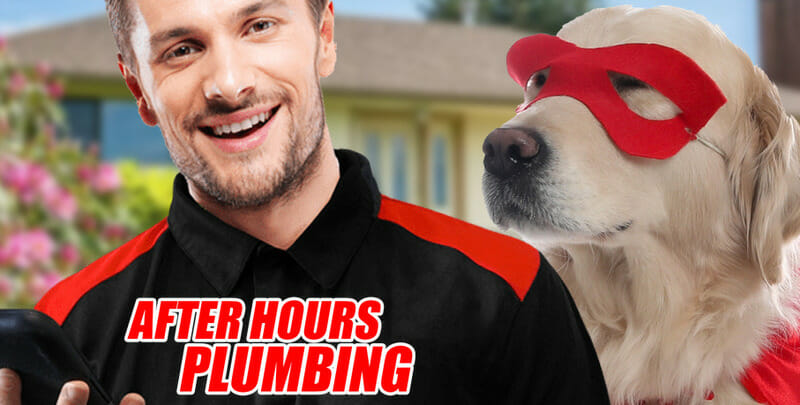5 Essential Tips To Stop Your Bathroom Sink Leaking Underneath

A bathroom sink leaking underneath is more than just inconvenient. It’s a dripping gateway to mould, water stains, costly repairs, and possibly a very expensive tantrum with your home insurance provider.
Whatever the cause of your leaking sink, even small leaks can turn into serious plumbing problems if you ignore them. The good news? Most of these leaks involve basic components and can often be fixed with a bit of DIY effort and maybe the correct size spanner.
You don’t need a professional plumber for everything; just some preventative measures and a desire to stop living in a slow-motion water feature.
Know Thy Sink: The Major Parts of a Bathroom Sink Explained
If you want to fix a leaking bathroom sink, you’ll need to know what you’re actually looking at under there. No, it’s not just a mess of tubes and regret. These are the main parts of your bathroom sink setup that are likely causing the chaos:
- Sink basin – The bowl itself. If it’s cracked, congratulations—you’re upgrading to a new sink.
- Sink flange & drain body – These form the opening at the bottom of the basin where water flows out. Prone to bad seals and cracked putty.
- P-trap – The curved drain pipe that holds water to block sewer gas. When it’s loose or clogged with hair, it can result in water leaking.
- Slip nuts & retaining nut – These hold everything together, until they don’t. Loose connections here are a common reason for sink drain leaks.
- Water supply lines & shut off valves – Deliver cold water and hot water to your tap. These can leak or corrode over time.
- Pivot rod, O-ring & tap handle – These control water flow, and also leak when ignored for an extended time.
Of course, you have your bathroom tapware as well. Knowing these parts helps you target the problem instead of randomly tightening everything like a stressed-out raccoon.

Tip #1: Turn Off the Water Before You Do Anything
Before you go poking around under the sink like a clueless gremlin, turn off the water. This isn’t optional, and will save you a whole heap of mess and stress.
Find the shut-off valves; they’re usually hidden below the sink basin. Twist them clockwise until they stop. If you skip this step, you’ll turn your bathroom sink leaking underneath into a full-blown indoor swimming pool.
Once you’ve shut off the water supply lines, run the tap to drain any leftover water. Use paper towels to dry the area and check for water pooling, stains, or the exact point of the leak beneath. This also prevents further mess while you work.
Don’t trust your instincts. Trust the plumbing logic. Cold water spraying in your face is not a rite of passage; it’s poor planning.
Tip #2: Check for Loose Connections in the Plumbing System
Loose fittings are the lazy villain in most leaking bathroom sink dramas.
Grab a torch and check every connection in the plumbing system. Pay particular attention to the slip nuts, the drain pipe, and where the water supply lines meet the tap. You’re looking for anything wobbly, damp, or just suspiciously off.
Use an adjustable spanner to gently tighten the offending loose connections, but resist the urge to go full Hulk. Over-tightening can crack plastic parts or strip threads, and then your DIY repair turns into a professional plumber call-out.
Check the P trap, retaining nut, and any part of the sink drain where movement could cause a leak beneath. If it moves and it shouldn’t, tighten it. If it drips, well—tighten it better (keeping in mind the “don’t over-tighten” instruction, of course).
Tip #3: Replace Worn-Out Parts
If tightening loose connections didn’t stop the bathroom sink leaking underneath, it’s time to face the truth: something’s broken or worn out.
Common culprits, especially in leaking bathroom taps, include:
- O-rings
- Washers
- The retaining nut
All of which are tiny, forgotten heroes that quietly deteriorate and fail over time.
Remove the sink drain assembly and inspect each potentially faulty component for cracks, brittle plastic, or anything that looks like it auditioned for a ’90s plumbing horror show. Across Australia, you can legally replace washers and O-rings yourself. Anything more complex, such as swapping the entire P-trap, belongs to a licensed plumber. More on that further on though.

Tip #4: Re-seal with Silicone Sealant (Not Putty)
If your bathroom sink is still leaking underneath, the seal around the drain flange or waste outlet could be to blame. In Australia, we tend to use sanitary-grade silicone sealant is the preferred choice over plumber’s putty for creating a watertight seal.
Start by removing the drain assembly and thoroughly cleaning off any old, cracked silicone or debris. Once the surface is dry, apply a neat bead of mould-resistant silicone around the base of the drain flange. Reinstall the assembly, then tighten the retaining nut gently until a small amount of sealant is squeezed out—wipe this away with a damp cloth for a tidy finish.
Let it cure fully as per the manufacturer’s instructions. This method provides a durable, watertight seal that holds up in wet, humid bathroom conditions.
Tip #5: Regular Maintenance Can Prevent Leaks
Want to stop your bathroom sink from randomly weeping into the cabinet below? Then fix it ASAP and adopt some basic preventive measures to stop it from happening again.
A bit of regular maintenance keeps leaking pipes and surprise puddles out of your life. Here’s what to do:
- Check water supply lines monthly for corrosion, cracks, or damp spots.
- Gently tighten slip nuts and retaining nuts (gently being the operative word here).
- Replace any O-ring, worn washer, or seal that looks dodgy.
- Clean gunk off the pivot rod, tap handle, and around the sink flange.
- Check the silicone seal around the drain flange and reapply sanitary-grade silicone if it’s cracked, peeling, or missing.
- Keep plumber’s tape and an adjustable wrench nearby.
- Use a torch to inspect for water stains, small leaks, or rogue drips.
Doing these simple things keeps your plumbing system in check—and your bathroom dry enough to remain a bathroom, not a swamp.
When To Call a Licensed Plumber in Australia
In many situations around the house, there’s a fine line between DIY repair and “oops, I’ve made it worse.” Here in Australia, that line is more “hard legal” than “fine” when it comes to minor maintenance tasks and regulated plumbing work.
A professional plumber isn’t just a luxury; it’s a legal requirement for anything more than merely replacing the tap washer or O-ring when you find your bathroom sink leaking underneath.
If the primary issue turns out to involve damaged water supply lines, alterations to the plumbing system, or anything requiring connection to the sewer, put down the pipe wrench or spanner and back away slowly.
Across Australia, it is illegal for an unlicensed person to carry out most plumbing work. You can void your home and contents insurance policy, as well as any warranties, and generally make things a whole lot worse for yourself.

Stop the Drip Before It Stops Your Weekend
A bathroom sink leaking underneath might seem like a minor annoyance, but ignore it long enough and you’ll be ankle-deep in water damage and regret.
Most leaks come from loose connections, worn-out parts, or a badly sealed drain flange—nothing a bit of plumber’s putty, an adjustable spanner, and mild determination can’t fix. With a bit of preventative maintenance, you can stop potential leaks before they flood your weekend. But if the leak persists, smells like sewer gas, or involves tampering with the home’s plumbing system, stop pretending and get professional assistance.
In the end, you’re trying to fix a sink, not build a submarine. Be smart, use the right tools, and stop the drip before it escalates.
Please note: Thanks for reading our blog “5 Essential Tips To Stop Your Bathroom Sink Leaking Underneath”. This information is provided for advice purposes only. Regulations differ from state to state, so please consult your local authorities or an industry professional before proceeding with any work. See our Terms & Conditions here.
